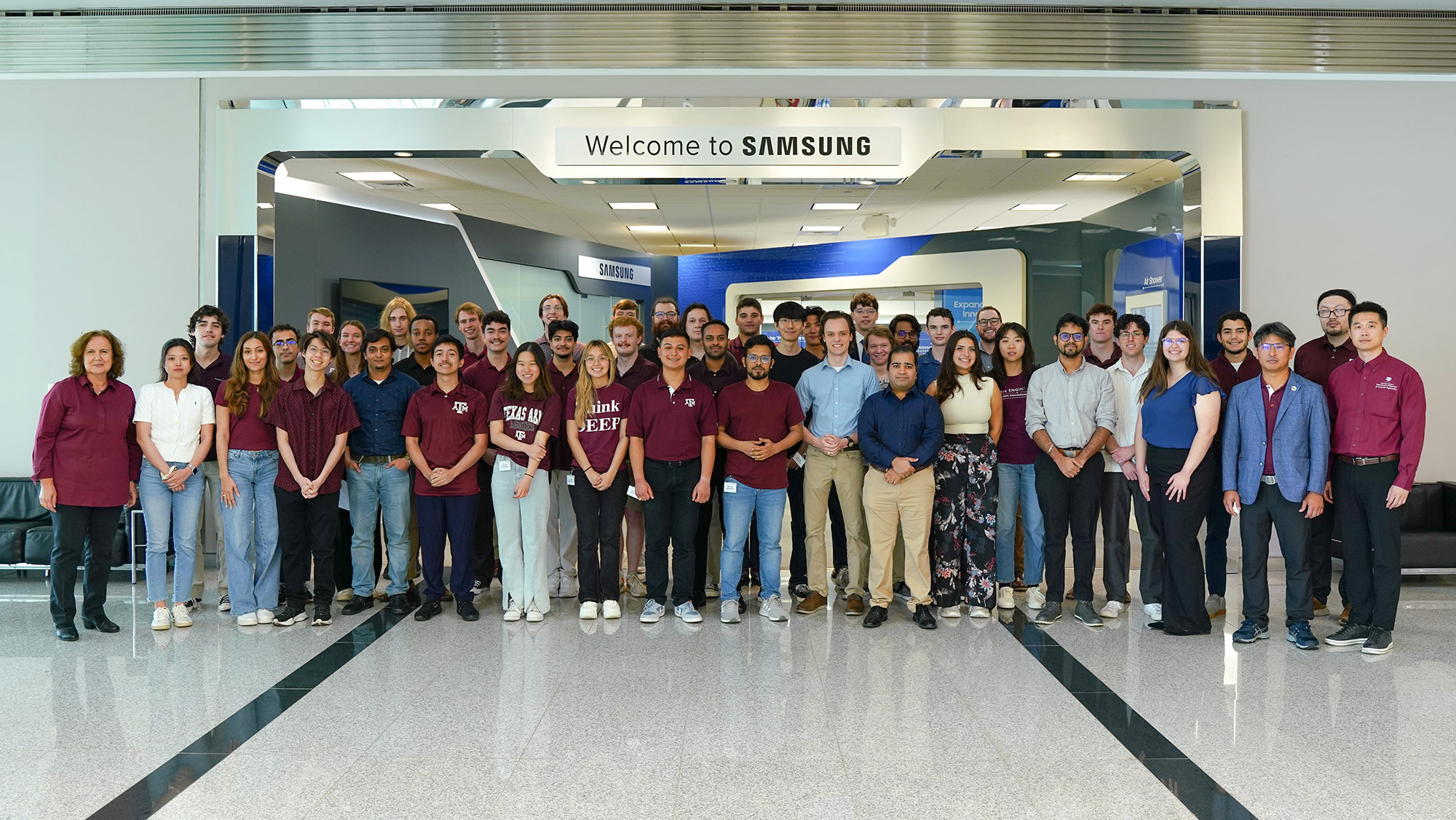
Samsung Austin Semiconductor contributed $1 million to the Texas A&M University College of Engineering to support groundbreaking student research through fellowships, scholarships and capstone projects.
Twenty-nine undergraduates and eight graduates from the College of Engineering were named Samsung Fellows for the 2023-24 school year, enabling them to collaborate with specialized research teams for two semesters with the intention of publishing their findings.
One week before many students’ final presentations at the Engineering Project Showcase, the fellows were invited on an exclusive tour of the Austin semiconductor facility, the largest semiconductor production center outside of Korea.
“Seeing the scale of operations and the level of expertise was truly eye-opening,” explained Nazmus Saadat As-Saquib, a first-year electrical and computer engineering Ph.D. student. “The tour offered a unique opportunity to bridge the gap between academic learning and industry practice.”
Through the fellowship, students are awarded access to valuable resources, mentorship and networking opportunities which serve to enhance their academic and research endeavors.
The tour offered a unique opportunity to bridge the gap between academic learning and industry practice.
“Getting the chance to interact with highly knowledgeable industry experts reinforced my enthusiasm for pursuing research in this field and provided valuable insights into the real-world applications of my academic work,” As-Saquib reflected.
Samsung’s growing semiconductor facilities have had billions in economic impact on the greater Central Texas region over the past three decades. Now, as the CHIPS and Science Act of 2022 and the Texas CHIPS Act of 2023 shine a spotlight on the demand for talent in the semiconductor industry, an increasing number of students aim to enter careers in the technology sector through chip manufacturing.
“Samsung Austin Semiconductor was granted $6.4 billion in federal CHIPS Act funding in mid-April of 2024, and will be investing more than $40 billion in the Taylor, TX campus, which is less than 90 minutes away from Texas A&M University,” explained Kwee Lan, a workforce development manager for Samsung. “This will open up numerous career and research opportunities.”
Samsung Austin Semiconductor looks to invest in the future of domestic chip manufacturing by fostering a close partnership with Texas A&M engineering and directly supporting students’ professional development.
“A&M students can get a glimpse of what their potential work environment in the semiconductor industry may look like,” stated Lan. “This is a valuable opportunity to network with Aggie alumni and university recruiters as they present their day-to-day work life, so that students leaving academia soon and entering the workplace can understand what the expectations are in the industry.”